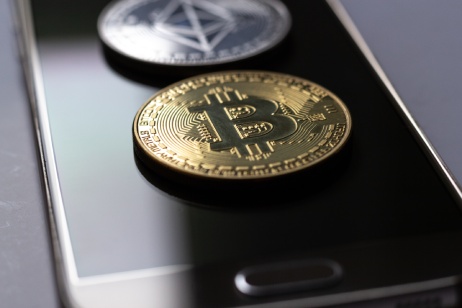-
Bitcoin's Ordinals protocol has made waves in the non-fungible token (NFT) space, enabling the conversion of Ethereum-based NFTs to Bitcoin. The BRC-721E token standard serves as a bridge between Bitcoin and Ethereum networks, allowing for seamless migration. Bitcoin Miladys launched this standard along with Xverse Bitcoin and Ordinals Market. This collaboration has facilitated the transfer of ERC-721 data and artwork over to Bitcoin through Ordinals. It presents promising opportunities for a cryptocurrency app development company seeking to transition to the Bitcoin blockchain.
BRC-721E Token Standard
The BRC-721E token standard facilitates a seamless transition of Ethereum-based ERC-721 projects to the Bitcoin network. It uses a process wherein it sends an ERC-721 token to a burn address.
Subsequently, it inscribes the NFT onto the Bitcoin network. After bridge completion, the standard display the NFT and its metadata on the Ordinals Market platform.
The BRC-721E blockchain token enables merchants to convert Ethereum NFTs to Bitcoin NFTs, facilitating seamless blockchain migration. Ethereum NFT holders can burn and transfer their NFTs to the Bitcoin network. The Token Ordinals Market displays detailed NFT information on the Custom Collection page.
The Ordinals market asserted that the BRC-721E standard's fundamental principles allow the protocol to evolve. They also emphasized the flexibility of the indexers in achieving this, even though metadata is initially not stored on-chain.
Previously, transferring NFTs to Bitcoin was complex, but the BRC-721E token standard has simplified the process. It opened opportunities for NFT collectors to migrate their assets from Ethereum to Bitcoin.
BRC-721E allows various projects to create cost-effective programs for transitioning ERC-721 NFTs to Bitcoin. It enhances existing projects and enriches the number of NFTs on the Bitcoin network, thereby increasing liquidity value.
Check It Out |BRC 20 Token | Everything You Need To Know
Collaboration between the Ordinals Market and the Bitcoin Miladys NFT Collection
Bitcoin Ordinals introduces a cutting-edge layer-2 solution that allows decentralized storage of digital art on Bitcoin. With the introduction of the BRC-721E standard, Ordinals enables users to transfer their Ethereum ERC-721-based NFTs to the Bitcoin blockchain.
BRC-721E standard launch was a collaborative effort between the Ordinals market (a marketplace on the Ordinals platform) and the Bitcoin Miladys NFT collection. This new standard, BRC-721E, facilitates the conversion of immutable and verifiable ERC-721 NFTs into Ordinals. Users can store a lower-quality preview image and include a reference to the Ether (ETH) burn in the raw image data.
To migrate an ERC-721 NFT, burning occurs through an ETH call function, leaving a unique inscription on the blockchain.
Validating the ETH burn on the Bitcoin network requires accurate BRC-721E data. Once completed, the NFT appears on a customized Ordinals marketplace collection page with detailed metadata.
Indexers, serving as vigilant gatekeepers, analyze the burned NFT's data to ensure only one valid inscription exists. They also ensure that the genesis address matches the burn transaction call data.
Suggested Post | Satoshi Nakamoto's Last Email Reveal Bitcoin Creator's Thoughts
Features of BRC-721E Token Standard
The BRC-721E token standard offers the following features:
- Seamless migration of unchangeable, verifiable ERC-721 NFTs to Ordinals
- On-chain inscription requests
- Automatic display of burned NFTs on marketplaces
- Indexers enable full-quality metadata presentation
- Ability to inscribe 100 bytes of JSON during times of low fees
- Potential for future upgrades and inclusion of additional on-chain data
You May Also Like | Unexplored ERC Token Standards On Ethereum
Related resources.
If you're interested in simplifying Ethereum transactions, check out our guide on How to Simplify Transactions with ERC 2771.
Want to run your own Polkadot full node? Learn more in our guide on How to Run and Setup a Full Node on Polkadot.
Summing Up
The smart combination of BRC-20 and Ordinals has opened up new avenues for token minting on the Bitcoin blockchain. It has resulted in the development of popular BRC-20 tokens among the thriving crypto community.
The groundbreaking BRC-721E standard is a big step forward in blockchain art transactions. It builds a strong bridge between Bitcoin and Ethereum, facilitating seamless connectivity and the exchange of assets.
The protocol offers flexibility and potential for future upgrades. This advancement presents opportunities for cryptocurrency app development companies to transition to Bitcoin and leverage the Ordinals protocol.
Discover the potential of blockchain-based cryptocurrencies with our services. Contact our crypto developers to discuss your project requirements.

Our Offices
INDIA
Emaar Digital Greens, Sector 61,
Gurugram, Haryana
122011.
Welldone Tech Park,
Sector 48, Sohna road,
Gurugram, Haryana
122018.















